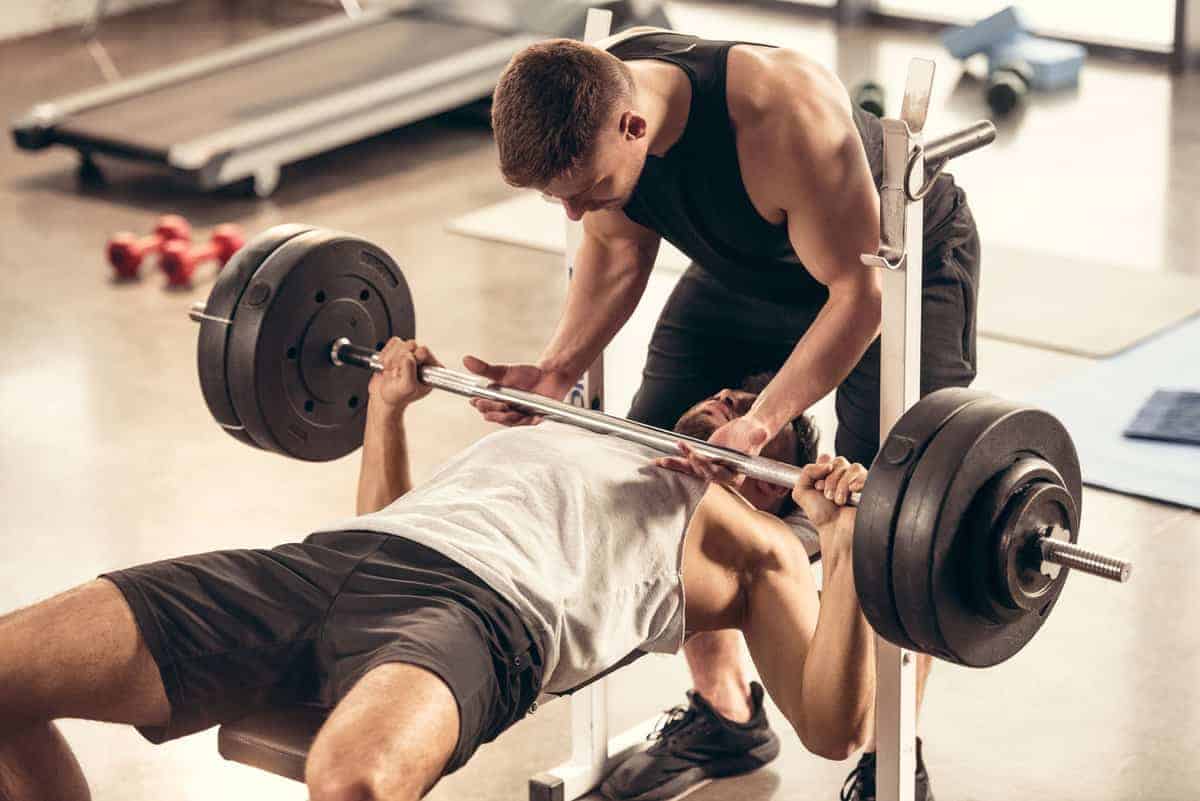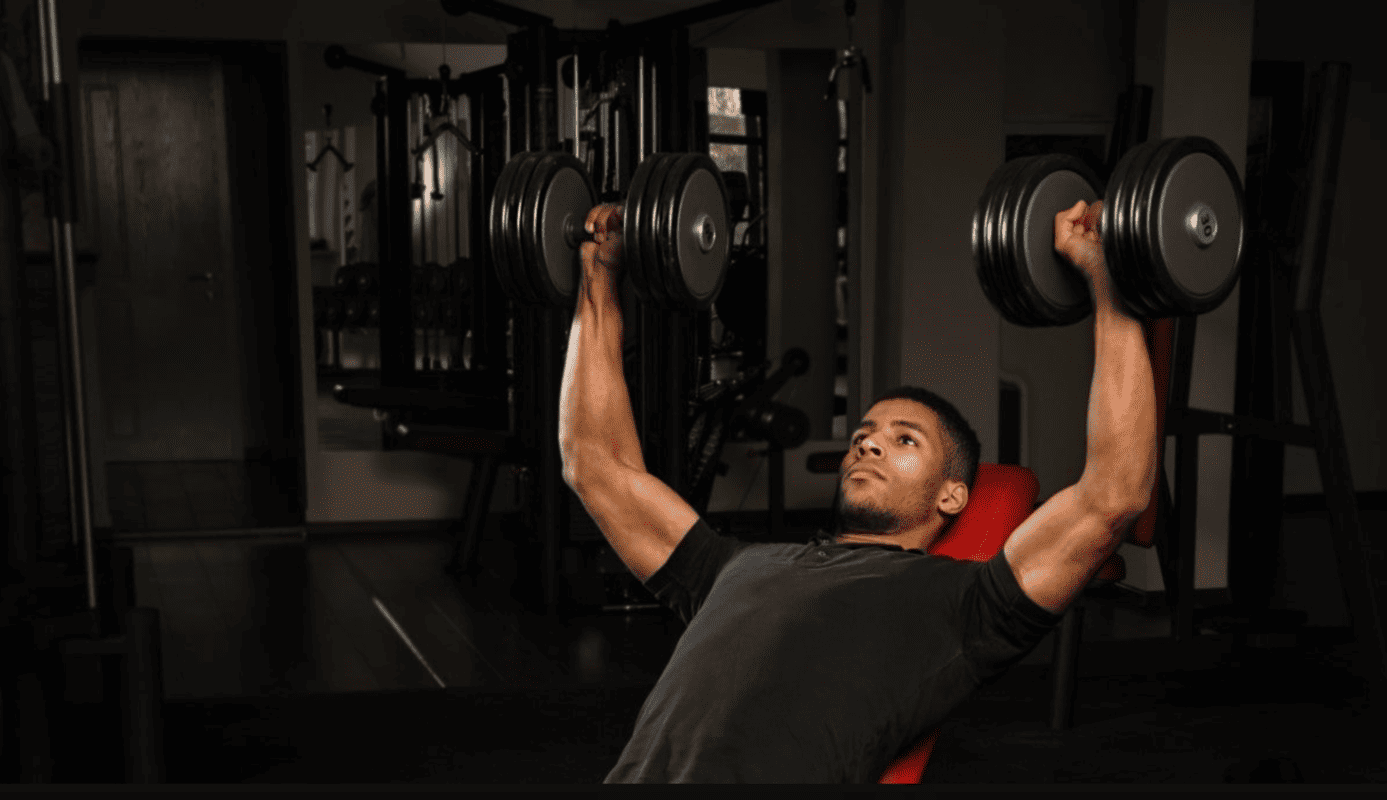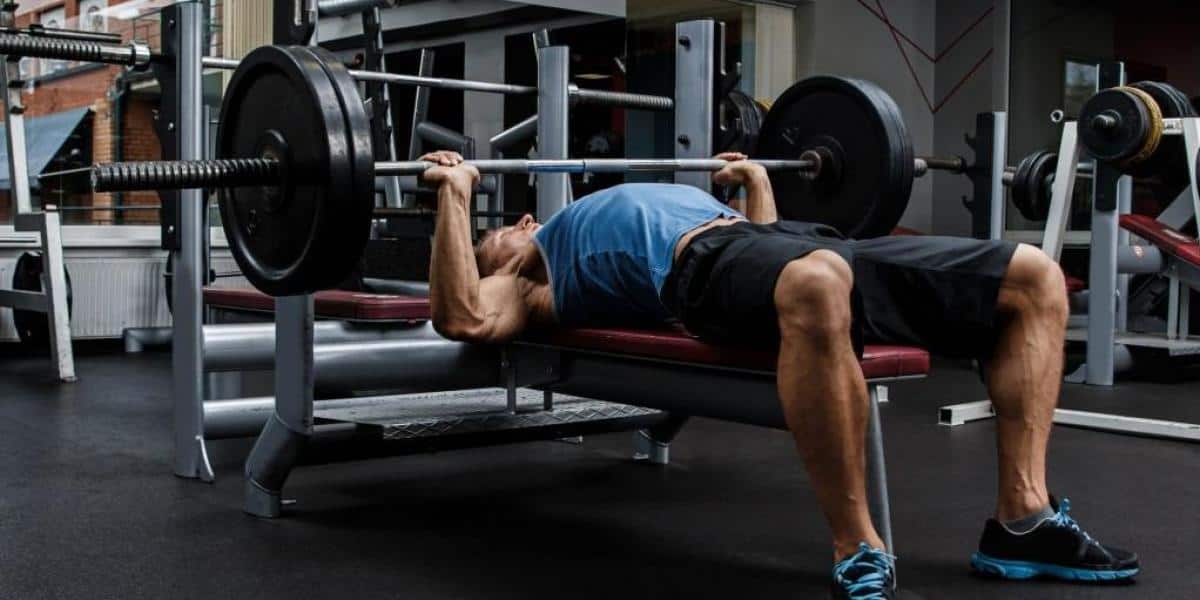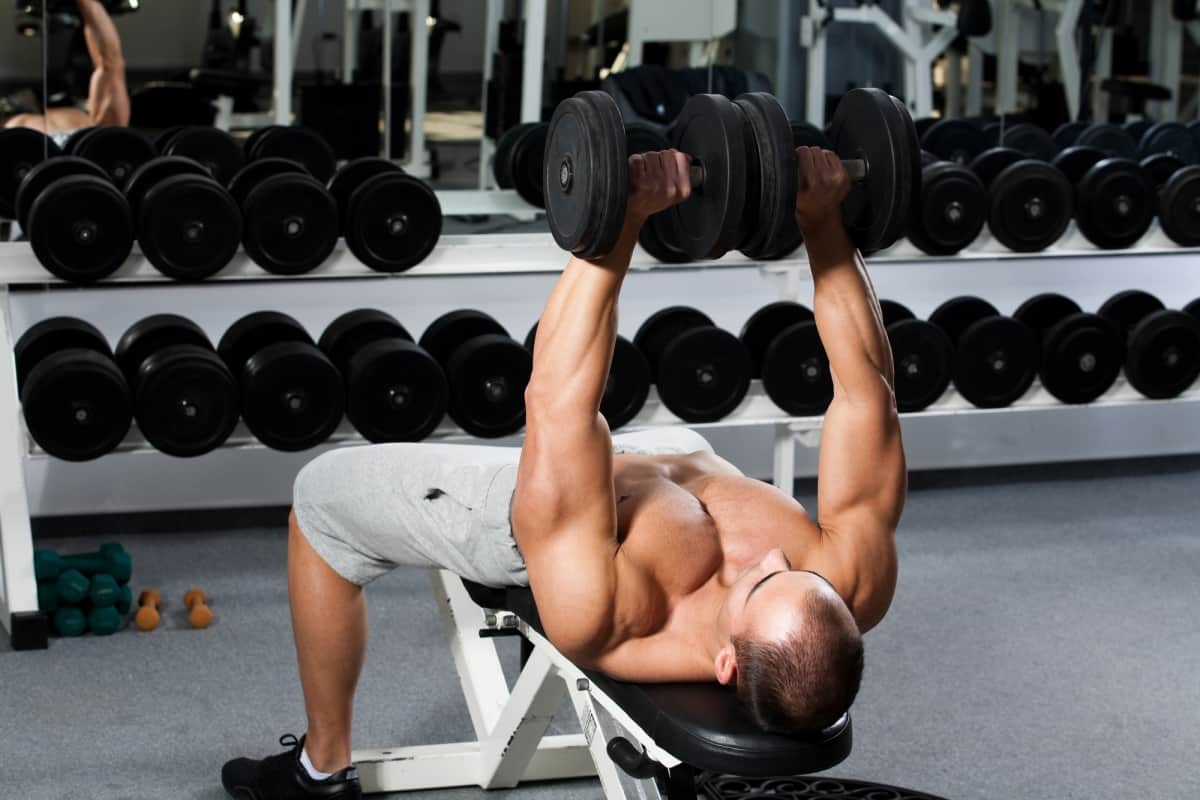In this article, we analyze the pectoral muscle group and present the best chest exercises to hypertrophy it. If you’re looking to train this part of the upper body, this is your article.
Pectoral anatomy
To define the best exercises for the pectoral, we must first analyze its anatomy.
The pectoralis major is a muscle located in the chest region that plays a fundamental role in shoulder and arm movements (1).
Its anatomy is characterized by having an origin in the clavicle, the sternum, and also in certain fibers of the oblique abdominal muscle. Its insertion is found in the inner part of the humerus, specifically in the intertubercular groove.
The anatomical structure of the pectoralis major can be divided into two main parts: the clavicular head and the sternocostal head.
The clavicular head extends from the middle third of the clavicle to the upper part of the arm, running along the inner surface.
On the other hand, the sternocostal head originates along the sternum and the rib cartilages, including a portion of the oblique abdominal muscle. This head also inserts into the upper part of the arm, practically at the same point as the clavicular portion.
The pectoralis major is a robust muscle that participates in various shoulder and arm movements, providing stability and contributing to the mobility of the shoulder joint, so pectoral exercises in your routine should include movements of this type.
Pectoral movements
Discovering its functions will allow us to have more criteria when selecting pectoral exercises, as we must choose those that cover all its functions. Its main functions can be summarized in the following points:
- Shoulder adduction: The pectoralis major also contributes to shoulder adduction, which involves moving the arm towards the body from a lateral position. This movement is especially important in activities like hugging or crossing the arms. The sternocostal head has the most leverage for this movement. We can say that this head is strong between 40-70º of arm elevation (2)
- Shoulder flexion: the pectoralis major is one of the main muscles involved in shoulder flexion, which consists of a movement where the arm moves forward and upward from a neutral position. When it contracts, it pulls the arm forward, bringing it closer to the body. Among the best pectoral exercises should be those that involve this gesture.
- Internal rotation of the shoulder: The pectoralis major muscle plays a role in the internal rotation of the shoulder. When activated, it helps to rotate the arm inward, bringing the hand closer to the abdomen.
- Shoulder stabilization: In addition to its involvement in shoulder movements, the pectoralis major plays a crucial role in stabilizing the shoulder joint. It acts as a stabilizing muscle, providing support and helping to prevent injuries during intense movements and activities.
- Shoulder extension: Although its contribution is not as prominent as in other movements, the pectoralis major can also assist in shoulder extension. In combination with other muscles, it helps to move the arm backward from a flexed position.
In summary, the pectoralis major plays fundamental roles in shoulder and arm movements. These functions include shoulder flexion, adduction, and internal rotation, as well as shoulder joint stabilization and contribution to arm extension.
Additionally, the pectoralis major is crucial in activities that involve weightlifting, providing strength and stability during these intense movements.
Synergy with other muscle groups
To extract a good selection of pectoral exercises, we must know which other muscles participate in the same gestures as the pectoral, so we can know how to focus more on the pectoral and less on the other synergistic muscle groups.
Anterior deltoid
The anterior portion of the deltoid, like the clavicular head of the pectoralis major, plays an important role as a shoulder flexor (4).
Both muscles collaborate in the gesture of raising the arm forward. It is interesting to note that the anterior deltoid has a significant capacity for shoulder flexion, as it has a greater leverage compared to the pectoralis major in this specific movement.
Unlike the pectoralis major, which experiences a decrease in its ability to generate force as the shoulder is elevated towards the end of the range of motion, the anterior deltoid does not see its force production capacity reduced in shoulder flexion.
This is because its leverage does not decrease, unlike the pectoralis major. Therefore, care must be taken in pectoral exercises that involve this gesture as the anterior deltoid could take on too much work.
Latissimus dorsi
The latissimus dorsi and the pectoralis major collaborate in the movement of shoulder extension. Shoulder extension involves moving the arm backward from a flexed or forward position. Both muscles play a fundamental role in this movement, but with slightly different anatomical and functional characteristics.
Both muscles work synergistically to perform the movement. The latissimus dorsi is the main driver of this movement, as its longer leverage allows it to generate greater force. On the other hand, the pectoralis major acts as a complementary muscle, providing stability and support during shoulder extension.
Triceps brachii
It hardly performs any gesture together with the pectoral (shoulder extension, but it is not very strong at doing it). Nevertheless, it participates in most pectoral exercises as it is a muscle that crosses both the elbow and shoulder (the two most present joints in pectoral training).
Pectoral and synergistic muscle activation according to the exercise
In a study conducted at the University of Wisconsin, several pectoral exercises were compared to evaluate their muscle activation.
The results revealed that the bench press, the pec deck, and the cable crossovers showed greater activation compared to other pectoral exercises like the chest press machine, parallel dips, incline flyes, and regular push-ups.
These exercises generated significantly higher activation in the pectoral muscles, so we could initially categorize them among the best pectoral exercises, although we know that EMG is not determinative for choosing the best exercise.
[article ids=”74844″] In another study, it was observed that the clavicular head of the pectoral, located at the top, showed greater electromyographic (EMG) activation as the bench incline increased during the chest press.
Additionally, it was found that the activation of the anterior deltoid followed a pattern similar to that of the clavicular head. On the other hand, the sternocostal head of the pectoral showed greater activation when the exercise was performed with the bench completely flat.
In a systematic review conducted in 2016 that analyzed studies on the muscle activation of the pectoralis major, anterior deltoid, and triceps brachii during the bench press, it was found that the pectoralis major and triceps brachii were the most active muscles, and their activation was significantly greater than that of the anterior deltoid.
Additionally, various factors were identified that influenced muscle activation during the bench press, such as exercise intensity, execution speed, muscle fatigue, the individual’s mental focus, the phase of the movement, and stability conditions.
Importance of pectoral exercises
The chest is one of the most visible parts of the human body, and having well-formed and strong pectorals can make a big difference in your physical appearance. But the benefits go beyond aesthetics!
Additionally, these exercises are essential for sports and physical activities that require upper body strength. It’s not just a matter of appearance, but also of functionality and health!
“Pectoral exercises provide you with both an attractive physical appearance and better body functionality. It’s a win-win!”
Best exercises for pectoral
Let’s get to the point of the article, the pectoral exercises you should include in your routine:
Incline dumbbell press
This press is one of the best exercises for the upper pectoral.
Execution
These are the steps to perform this exercise correctly:
- Adjust the incline bench: Make sure the bench is at an incline position of approximately 30 to 45 degrees. This will provide the proper angle to focus the work on the upper portion of the chest.
- Starting position: Extend your arms upward and hold the dumbbells at shoulder height, with your palms facing forward. Keep your elbows slightly bent and your shoulders back and down.
- Controlled descent: Slowly inhale and begin to lower the dumbbells to the sides of your shoulders, keeping your elbows slightly bent. Control the movement and avoid letting the dumbbells touch your chest.
- Explosive ascent: Exhale and begin to push the dumbbells upward, extending your arms and returning to the starting position. Maintain control throughout the movement and avoid fully locking your elbows in the top position to keep tension on the muscles.
Keys
These are the keys to one of the best exercises for the pectoral:
- Do not make an excessive lumbar arch, as it would turn it into a flat press.
- The “ideal” incline will depend on the disposition of the pectoral and rib cage of the person.
- Do not lose the verticality of the movement.
- Align the direction of the arm (humerus) with that of the upper fibers of the pectoral, performing a combined movement of adduction + shoulder flexion.
- Do not lift your hips off the bench.
Seated cable crossovers
This is another of the complete pectoral exercises.
Execution
- Adjust the height of the pulleys: Make sure the pulleys are adjusted to a height slightly above your shoulders. Sit on the bench so that your feet are firmly planted on the floor and your back is straight.
- Starting position: Extend your arms to the sides and slightly forward, keeping your elbows slightly bent. Keep your shoulders back and down, and your back straight.
- Crossover of the pulleys: Exhale and begin to bring your hands together in front of you in a crossover motion. As you cross your hands, focus on squeezing the chest muscles and maintaining control of the movement.
- Contraction and pause: When your hands are in front of you, contract the chest muscles for a second to maximize muscle contraction. Maintain tension in the chest and avoid letting the pulleys separate suddenly.
- Controlled return: Inhale and slowly return to the starting position, separating your hands and stretching your arms to the sides. Control the movement throughout the range and avoid letting the pulleys collide abruptly.
Keys
- Do not focus on “colliding or joining” the hands, but on squeezing one pectoral with the other as much as possible.
- Think about bringing the biceps as close as possible to the lateral area of the pectoral.
- Keep your elbows high, correctly aligning the cable of the pulley with the humerus.
- Avoid swinging with the torso, stick out your chest and stay stable.
- Perform a range of motion as complete as possible.
- Keep your elbows semi-flexed, neither fully extended nor bent.
Parallel dips
The third of the best exercises for the pectoral are parallel dips, a very complete exercise that we will execute as follows.
Execution
- Starting position: Position yourself between the parallel bars with your arms extended and your hands holding the bars. Separate your legs slightly and bend your knees or cross your ankles so they don’t touch the ground.
- Controlled descent: Slowly bend your elbows to lower your body downward, keeping your torso upright and your elbows close to your body. Lower until your shoulders are at elbow height or slightly below.
- Explosive extension: Push forcefully upward through your arms to return to the starting position, fully extending your elbows. Keep your shoulders down and your back straight throughout the movement.
Keys
- In these pectoral exercises that include your own weight, do not push off with your legs or swing.
- Maintain scapular retraction, and do not hunch your back during the exercise.
- Lean slightly forward.
- Apply force downward and forward, placing your hand behind the shoulder line.
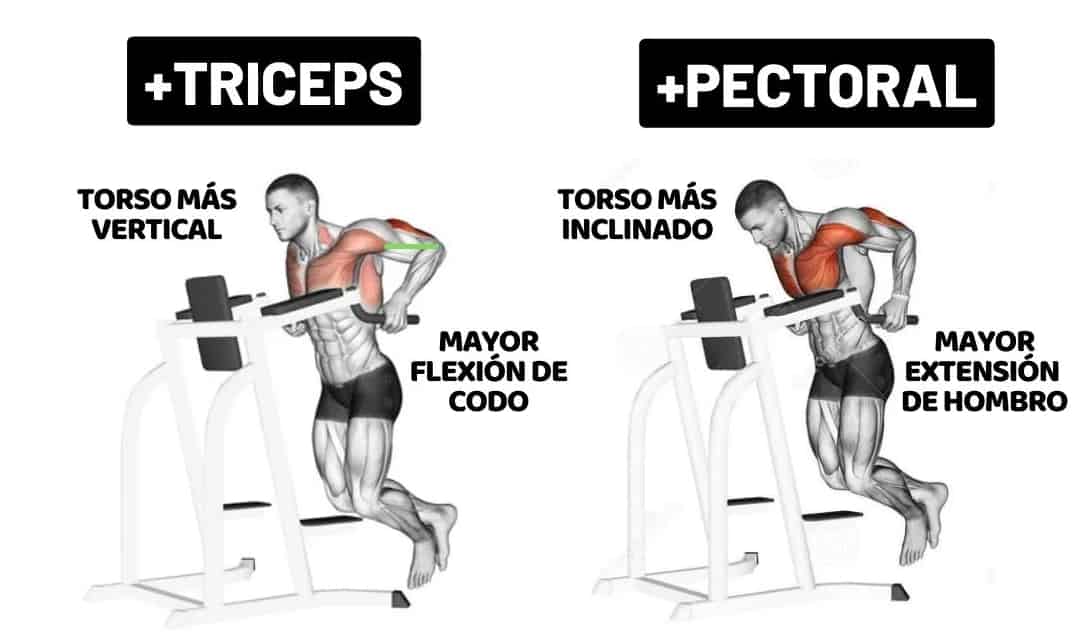
Bench press
The bench press is the undisputed king of pectoral exercises. It works the pectoralis major muscles, as well as the triceps and anterior deltoids.
“The bench press is a powerful tool for developing strength and size in your pectorals.”
Dumbbell flyes
Dumbbell flyes are ideal for isolating and strengthening the pectoral muscles. Incorporate them into your routine to give that extra boost to your workouts!
⚠ Pectoral exercises
|
Exercise |
Muscles worked |
|---|---|
| Bench press | Pectoralis major, triceps, anterior deltoids |
| Push-ups | Pectoralis major, triceps, anterior deltoids |
| Dumbbell flyes | Pectoralis major |
The keys to pectoral hypertrophy
To grow it, it is not enough to just do these pectoral exercises we have seen, but we must consider some keys to hypertrophy it:
- Progressive weight training: This involves performing a variety of pectoral exercises using weights that allow you to complete 6 to 15 repetitions in most of your sets, with good technique and without compromising form. As you gain strength, you should progressively increase the weight in your pectoral exercises to continue challenging your muscles and promoting growth.
- Adequate training volume: this involves performing a sufficient amount of pectoral exercises in each session and microcycle (set of sessions). It is recommended to perform 3 to 4 sets of each exercise and 6 to 15 repetitions per set in pectoral exercises. Additionally, it is important to vary the angles and variations of the exercises to ensure you stimulate all the muscle fibers of the chest during your pectoral exercises.
- Rest and recovery: are crucial to allow your muscles to repair and grow after training. Make sure to give your pectoral enough time to recover between your pectoral exercise sessions. Additionally, good nutrition and sufficient sleep are also essential for recovery and muscle growth.
Remember that muscle hypertrophy does not happen overnight and requires time, consistency, and patience in your pectoral exercises. It is important to follow a structured training program that includes specific exercises and adapt it over time.
Tips for chest training
- Warm up before starting: Before starting your pectoral exercises, it is essential to perform an adequate warm-up to prevent injuries and prepare your muscles for the work ahead.
- Maintain correct technique: Maintaining good technique during your exercises is essential to achieve the desired results and avoid injuries. If you are unsure how to perform an exercise, do not hesitate to ask for help from a professional trainer.
- Vary your exercises: To avoid stagnation and continue progressing, it is important to vary your exercises and try new things from time to time. Do not limit yourself to only the exercises you already know.
- Rest adequately: Remember that your muscles need time to recover and grow after a workout. Make sure to rest enough between pectoral exercise sessions.
Training routine with pectoral exercises
In a workout, I do not recommend including only pectoral exercises in isolation, but rather combining them with other muscles such as the triceps or deltoids. What we commonly call a push workout, here I develop a workout of this style that you can adapt to yourself:
|
EXERCISE |
SETS |
REPS |
INTENSITY |
REST |
|---|---|---|---|---|
| Incline dumbbell press | 3 | 7-9 | RIR 2 | 3-4´ |
| Military press in Smith machine | 3 | 7-9 | RIR 2 | 3-4´ |
| Seated cable crossovers | 2 | 10-15 | RIR 0 | 2´ |
| Parallel dips | 2 | 15-20 | RIR 1 | 2´ |
| Unilateral cable lateral raises | 3 | 10-20 | Failure | 2´ |
| JM press with barbell | 3 | 8-10 | RIR 1 | 2´ |
| Unilateral high cable triceps extension | 2 | 10-20 | RIR 0 | 2´ |
| High cable crunch | 4 | 10-20 | Failure | 2´ |
Conclusion
The pectoralis major is a muscle located in the chest region that plays a fundamental role in shoulder and arm movements. Among the pectoral exercises you perform, you should include those that involve: shoulder flexion, adduction, and stabilization.
Among these pectoral exercises, we can define as priorities, always depending on the context and the person, the incline dumbbell press, parallel dips, and seated cable crossovers.
Bibliographic references
- Muyor JM, Rodríguez-Ridao D, Martín-Fuentes I, Antequera-Vique JA. Evaluation and comparison of electromyographic activity in bench press with feet on the ground and active hip flexion. PLoS One. June 14, 2019; 14 (6): e0218209. doi: 10.1371/journal.pone.0218209. PMID: 31199829; PMCID: PMC6568408. (Link)
- Blazek, D., Kolinger, D., Petruzela, J., Kubovy, P., Golas, A., Petr, M., Pisz, A. and Stastny, P. (2021). The effect of breathing technique on the sticky region during maximum bench press. Biology of Sport, 38 (3), 445–450. https://doi.org/10.5114/biolsport.2021.100362 (Link)
- Boyle, M. (2017). Functional training applied to sports. Tutor Editorial. Boadilla del Monte, Madrid, Spain.
- Estrada Bonilla, Y. (2018). Biomechanics: from mechanical physics to the analysis of sports gestures. Universidad Santo Tomás. Faculty of Physical Culture and Sport and Recreation. USTA Editions.
